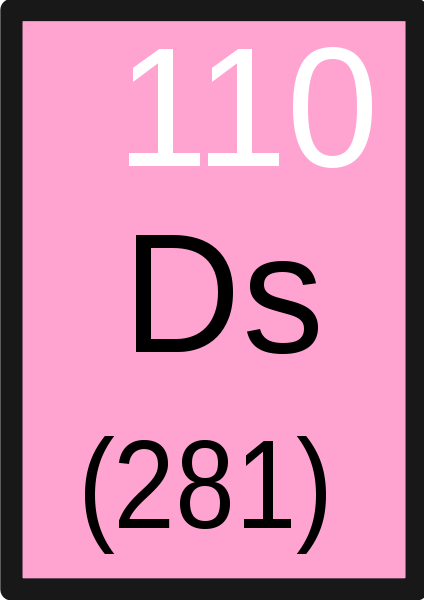Darmstadtium
In the periodic table, it is a d-block transactinide element. It is a member of the 7th period and is placed in the group 10 elements, although no chemical experiments have yet been carried out to confirm that it behaves as the heavier homologue to platinum in group 10. Darmstadtium is calculated to have similar properties to its lighter homologues, nickel, palladium, and platinum.
Discovery of Darmstadtium
Darmstadtium was first synthesized by research scientists at the Heavy Ion Research Laboratory in Darmstadt, Germany in 1994.
The element was made by bombarding lead-208 atoms with nickel-62 atoms in a heavy ion accelerator.
Four atoms of darmstadtium were produced in the first experiment.
The element is named after the city where it was first made.
In addition to darmstadtium, the Heavy Ion Research Laboratory has been responsible for the discovery of several heavy elements: bohrium in 1981, meitnerium in 1982, hassium in 1984, roentgenium in 1994, and copernicium in 1996.
Appearance and Characteristics
Harmful effects:
Darmstadtium is a synthetic radioactive metal and has only been produced in tiny amounts.
Characteristics:
- Dubnium is a radioactive synthetic metal and has only been produced in tiny amounts.
Uses of Darmstadtium
- Darmstadtium is of research interest only.
